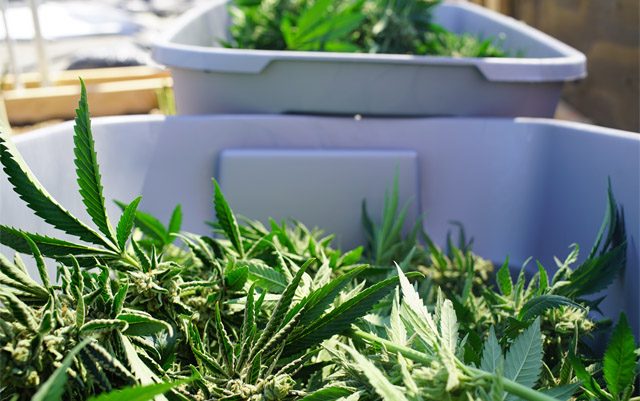One of the lessons that legalization has taught us again and again is to prepare for an influx of people buying legal cannabis. At least at first, anyway. In the U.S., we’ve seen many instances where dispensaries struggle to keep up with the demand of products for medical and recreational cannabis consumers. But, it appears our neighbors to the north have a problem we’ve seen far less often. Canada was preparing for a huge number of people to be buying legal cannabis – and producers got way ahead of themselves, growing more than the country needs for the year.
“Canadian cannabis producers and extractors are sitting on a massive stash of unfinished inventory that is growing so quickly that some analysts are concerned it could precipitate a price crash in the burgeoning industry.”
One of the main goals of legalization is to end the illegal sale of cannabis – but that doesn’t appear to be happening as quickly as Canadians might have hoped. Recent surveys found that only 28 percent of cannabis users claim to purchase their products from government-licensed retailers. The remaining 72 percent – of more than 5 million Canadians age 15 and older – are still looking to illegal sources to buy their bud. This could be online or unlicensed dispensaries, or the same “guy” they’ve been buying from for years.
What matters is the legal industry prepared for more than 5 million cannabis consumers, and now they are only getting a little more than a quarter of those as customers. Canopy Growth says they harvested 40,570 kg of cannabis, and Aurora Cannabis harvested 41,436 kg. Either of these companies are poised to be able to single-handedly meet the recreational cannabis needs of the entire country for the next year, according to data provided by the group Cannabis Benchmarks.
However, the reason that so few people are purchasing their cannabis through legal channels could be impacted by many things, one of which could be the lack of access to dispensaries. For example, Ontario – the most populated province in the entire nation – only has 24 dispensaries open. As it stands, that is certainly not enough to be convenient to everyone, forcing many to go out of their way or find a different means to get their marijuana.
There are a number of issues that will need to be worked out – no state or country that has chosen to end prohibition has been able to do so without at least a few hiccups. It’s going to take awhile for Canada’s legal cannabis supply to fix itself. But, in the meantime, there is a good chance the price of cannabis could significantly drop to help sell off the unintended oversupply.







More dispensaries locally managed by communities, fewer encumbering federal regulations, and no corporate cannabis growers could resolve the oversupply and the unequal distribution, to improve the legal sales of cannabis and its products.
An amendment to the USMCA that fairly defines marijuana with controls, could establish an agreement among the treaty’s nations for the benefit of the citizens in these adjoining countries.
Why not agree on this reconstruction of the US definition that does not have disparaging racism, nor any riddled meaning, nor any unjustly aggrandized prohibition, for a “delightful” North American future:
The term “marijuana” means all parts of the smoke produced by the combustion of the plant Cannabis sativa L., which is, as are the viable seeds of such plant, prohibited to be grown by or sold by any publicly traded corporation or subsidiary company, and such smoke is prohibited to be inhaled by any child or by any person bearing any firearm, as is their intake of any part or any product of such plant containing more than 0.3% THC by weight unless prescribed to such child by an authorized medical practitioner.